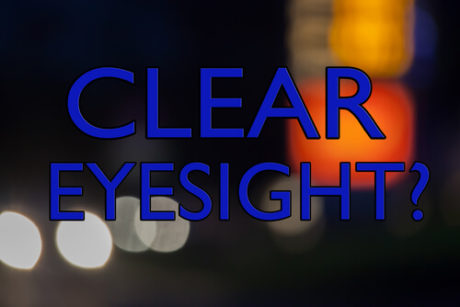Kieran Graham
Read More
Very professional courses. Great Administration assistance and high quality e-learning service.
Sarah Jennings
Read More
I did forex trading diploma. Very professional and detailed course.
Jordan Cooke
Read More
The course offered is excellent. I am glad to have taken it.














The minimum age at which one can take a UK driving test is currently 16 for mopeds and 17 for cars (16 for those on the higher/enhanced rate of the mobility component of DLA or PIP). There is no upper age limit. In addition to a driving licence, a CBT certificate may be required before a moped or motorcycle is ridden.
The current test
Currently, there are two tests (for a car licence) that need to be passed in order to obtain a full driving licence. First the theory test and then, within two years of passing this, the practical test.
Theory test
The theory test is made up of two parts, both of which differ according to the type of vehicle licence the candidate is pursuing:
Multiple-choice test
Hazard perception test
Both parts must be passed in order to obtain a theory test pass certificate. This enables the candidate to book a practical driving test. Candidates have two years from the date that they passed the first part of their theory test to take their practical test, or they will have to pass both parts of the theory test once again before they can book a practical test.
Multiple-choice test
This part of the theory test is performed on a computer system. The test has 50 multiple choice questions and the candidate must answer at least 43 of them correctly to pass. All questions are randomly selected from a bank of just under one thousand on a selection of topics.
The test lasts for 57 minutes although candidates with certain special needs can apply for more time. All 50 questions must be answered. The test allows 15 minutes practice time at the start of the exam to get used to answering the questions and how to use the system. To answer a question the candidate simply touches their choice of answer from the listed answers on the computer screen. If a mistake is made the candidate can deselect a choice and reselect a different option. The candidate is allowed to go back to a question at any time and can also flag questions they are unsure of in order to find and return to it quickly and easily later. To pass the test, 43 of the 50 questions (86%) must be answered correctly.
For lorry and bus drivers, 100 questions are asked over a 115-minute period, and 85 out of 100 must be answered correctly to pass.
Prior to 3 September 2007, the car and motorcycle multiple-choice tests comprised 35 questions, with a pass mark of 30 within a 40-minute time limit.
Candidates watch fourteen one-minute clips (nineteen clips for lorry and bus candidates) filmed from the perspective of a car driver or motorcyclist and have to indicate, usually by clicking a mouse button or touching the screen, when they observe a developing hazard.
Practical test
Unless one is converting a foreign licence, it is necessary to have passed both components of the theory test before sitting this exam. Passing the practical test then entitles one to hold a full UK driving licence.
The test candidate must produce their provisional licence for the examiner before the test starts.
The practical car test can be taken in either a manual or an automatic car; if the test is passed in an automatic car, then the full licence granted will be restricted to automatic cars only.
The practical motorcycle test is split into two separate modules – the off-road module and the on-road module. To get a full motorcycle licence, the candidate needs to pass both modules. The target waiting time for a practical driving test is six weeks. However, in practice the waiting time can be considerably longer.
Format
The practical car test is taken on the road, with a professionally trained DVSA examiner directing the candidate around a pre-determined route. The examiner marks the candidate for driving faults, serious faults, and dangerous faults. A candidate will fail the test if he or she accumulates any serious or dangerous faults, or more than fifteen driving faults. If a candidate accumulates several driving faults in the same category, the examiner may consider the fault habitual and mark a serious fault in that category. The test usually lasts 38 to 40 minutes in a standard test, or approximately 70 minutes when the candidate is taking an extended test after having had their licence revoked.
Eyesight test
Before getting to the car, the examiner will ask the candidate to read a car’s number plate at a distance. The distance required is 20.5 metres for an old-style plate (A123 ABC) and 20 metres for a new style plate (AB51 ABC). If the candidate needs glasses to do this, then they must be worn during the test. If the candidate fails to read the first number plate correctly, then the examiner asks the candidate to read a second number plate. If the candidate cannot correctly read the second number plate, then the examiner must use a tape measure to measure the correct distance between the candidate and a third number plate. If the candidate cannot read the third number plate, then the candidate is deemed to have failed and the test will not continue.
Vehicle safety questions
Before the candidate is taken out onto the road, the examiner asks two questions about car maintenance and safety. These are phrased in the form “Show me…” and “Tell me…”; as such, this component of the test is often known as “Show me, tell me”. For example:
A failure to answer one or both of these questions correctly would result in a driving fault being marked against the candidate. The questions that may be asked are changed from time to time. From July 2008, there are 19 different questions which can be asked in 13 different combinations.
Controlled stop
The controlled stop, more commonly referred to as the “emergency stop”, is an exercise which determines the ability of the candidate to stop the vehicle promptly yet under control during a simulated emergency. The simulation is performed by the examiner raising his or her hand and saying, “STOP!”. A controlled stop exercise will be carried out on every extended test and one third of normal tests. This might be an emergency stop, or the candidate might be asked to make a controlled stop in a specific location. During dangerous weather conditions, such as rain and snow, this test can be left out for safety reasons.
Manoeuvres
During the test, the examiner will ask the candidate to carry out one manoeuvre from the following list:
Manoeuvres are selected at random by the examiner depending on the route chosen and conditions on the route.
General driving
Generally, the candidate must demonstrate an ability to drive in various road and traffic conditions and react appropriately to actual risk situations. The conditions typically encountered on the test include driving in urban areas as well as higher speed limit roads where possible; this includes dual carriageways but not motorways as motorways in Britain can only be used by full licence holders. The object of the test is to ensure that the candidate is well grounded in the basic principles of safe driving, and is sufficiently practised in them to be able to show, at the time of the test, that they are a competent and considerate driver and are not a source of danger to themselves or to other road users. The drive will include two or three normal stops at (and be moving away from) the side of the road on level roads as well as on gradients, in addition to a demonstration of moving away from behind a stationary vehicle. The regulations state that the on-road driving time must be no less than 30 minutes. If at any point during the test, the examiner has to intervene with any controls, this will usually result in failure and could be marked on the test report as a dangerous fault.
Independent driving
The test includes a 10-minute section of independent driving. It is included in the following practical driving tests:
During the independent driving section, candidates have to drive by:
To help candidates understand where they are to go, the examiner may show them a route diagram. It does not matter if candidates do not remember every direction, nor if they deviate from the intended route unless they commit a driving fault.
If there are poor or obscured traffic signs, the examiner will give the candidate directions until they can see the next traffic sign. Candidates will not need to have a detailed knowledge of the area, but will not be allowed to use Automotive navigation system for this part of the test.
If the candidate has special needs, the examiner will be able to make reasonable adjustments. For the independent driving section, this could be asking the candidate which method they prefer – following signs, or a series of directions (a maximum of three).
-

Add a note